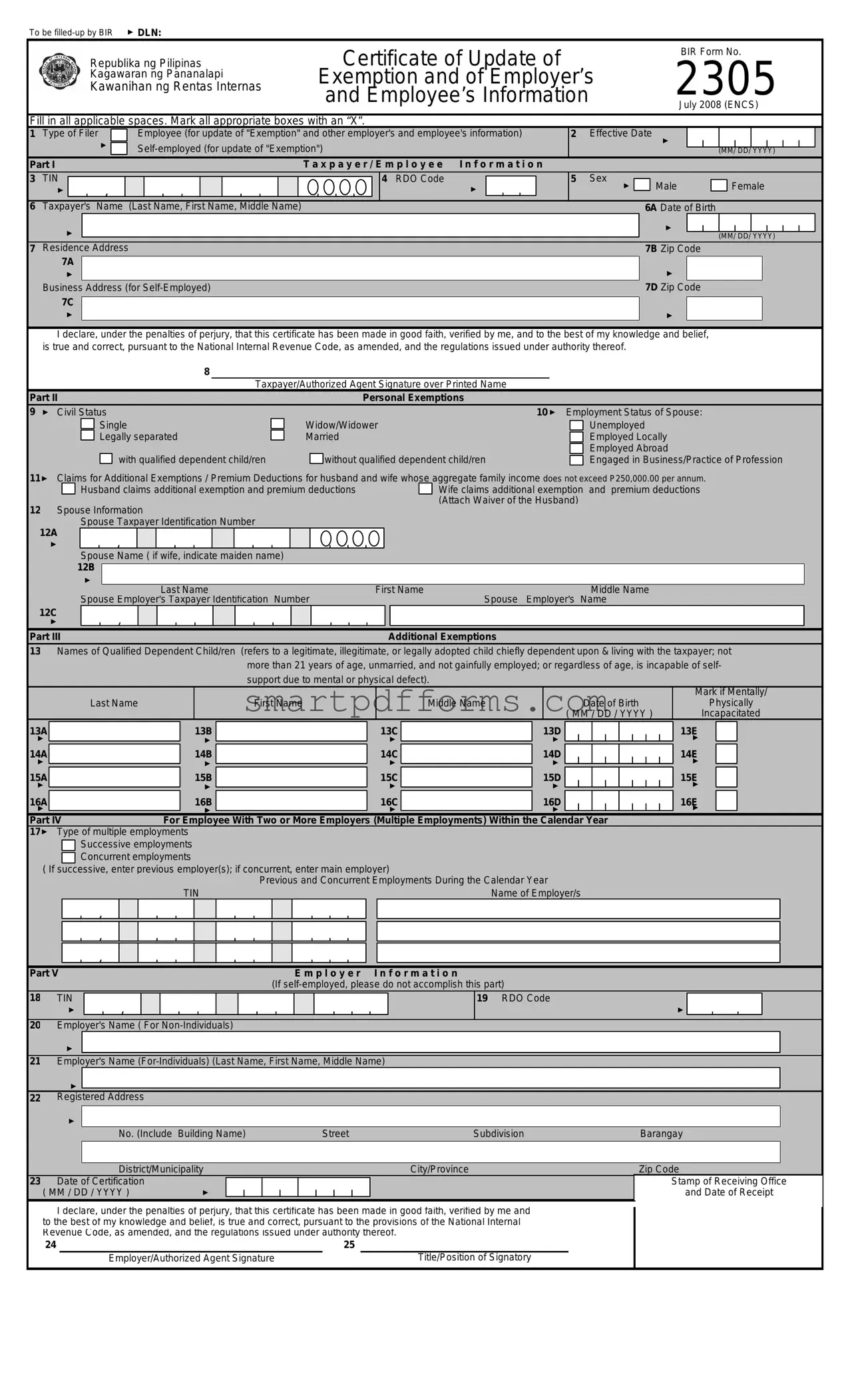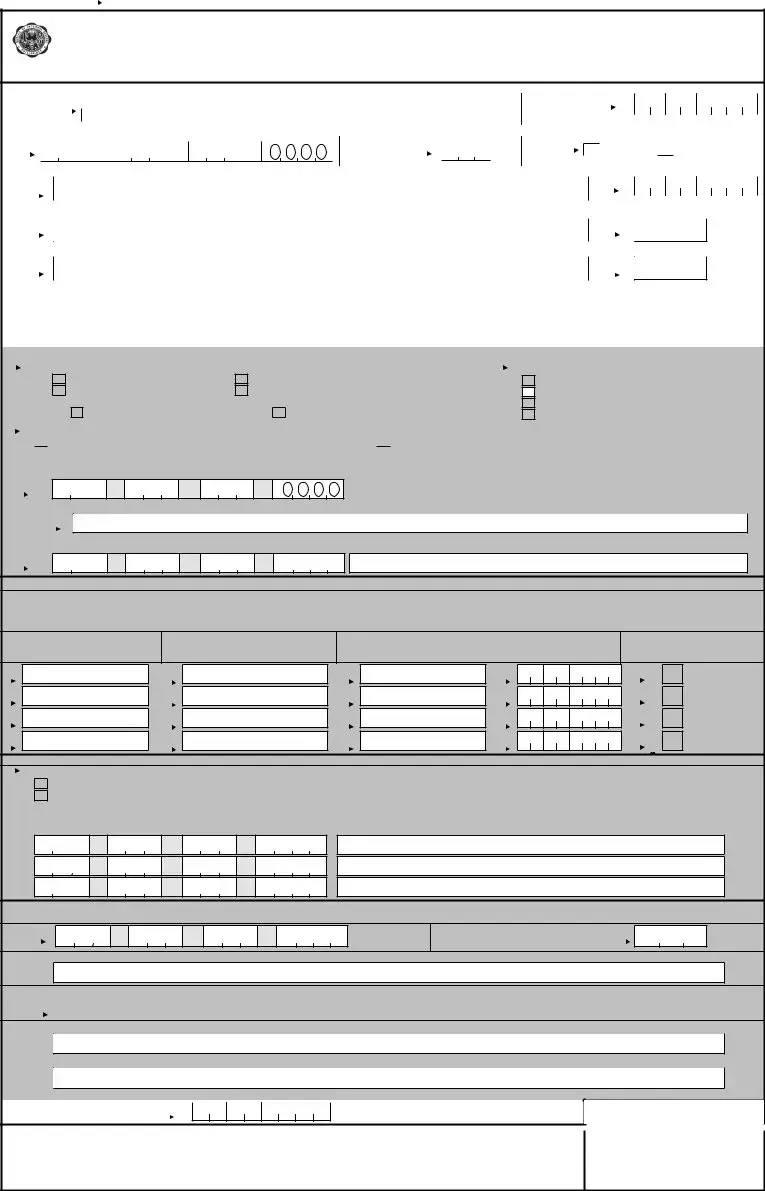Blank Bir 2305 PDF Template
The BIR Form No. 2305 is a vital document for taxpayers in the Philippines, designed to update exemption statuses and both employer's and employee's information. It serves as a certificate for changes that include civil status modifications, additional dependents, and adjustments in employment details among others. For those needing to make any updates to their tax records, filling out this form carefully is essential. Click the button below to start filling out your form to ensure your tax records are current and accurate.
Make This Document Now


 I
I I
I